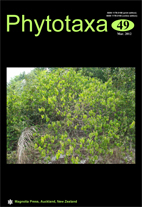Abstract
Phylogeny of the genus Barbilophozia inferred from ITS1-2 nrDNA, trnL-F and trnG-intron cpDNA provides different evolutionary scenarios within the genus. ITS1-2 tree placed B. barbata and B. lycopodioides in sister position, whereas from both cpDNA loci morphologically quite distinctive B. barbata is separated from B. hatcheri and B. lycopodioides. The significant differences in nucleotide sequences suggest that B. lycopodioides and B. hatcheri are clearly separated species. The poorly known species—B. rubescens—has originated through hybridization of B. barbata and B. hatcheri. The occurrence of both two parental types of ITS in hybrid accessions indicate a non-completeness of concerted evolution in these cases. The highest haplotype diversity is found for ITS1-2 that could be caused by recombination, whereas trnL-F and trnG are characterized only by several haplotypes. The haplotypes distribution is weakly supported from geographical evidence.

